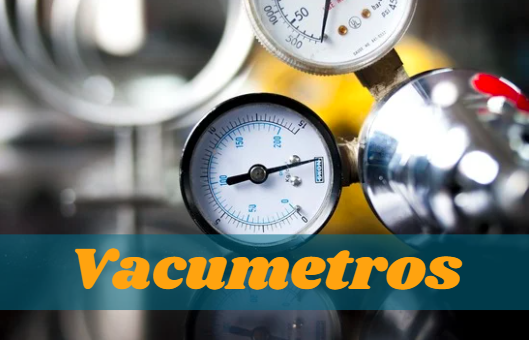Contents
Introduction to Vacumetros
Vacumetros, also known as vacuum gauges, are essential instruments used to measure and monitor vacuum levels within a closed system. These devices are critical in various industries, from automotive and aerospace to manufacturing and scientific research. This comprehensive guide will delve into the different types of vacumetros, their applications, benefits, and how to select the right vacuum gauge for your needs.
What Are Vacumetros?
Vacumetros, or vacuum gauges, are devices designed to measure the pressure within a vacuum. They provide readings that help monitor and control processes where maintaining a specific vacuum level is crucial. Vacumetros come in various types, each suited for different applications and measurement ranges.
Types of Vacumetros
- Mechanical Vacuum Gauges:
- Bourdon Tube Gauges: Utilized for measuring higher vacuum levels.
- Diaphragm Gauges: Suitable for lower pressure measurements.
- Bellows Gauges: Used for both high and low vacuum applications.
- Thermal Conductivity Gauges:
- Pirani Gauges: Measure vacuum by detecting heat loss from a heated wire.
- Thermocouple Gauges: Similar to Pirani but use a thermocouple to measure temperature changes.
- Ionization Gauges:
- Cold Cathode Gauges: Measure vacuum by ionizing gas molecules using a magnetic field.
- Hot Cathode Gauges: Use a heated filament to ionize gas molecules for measurement.
- Capacitance Manometers:
- Provide high-accuracy measurements by detecting changes in capacitance due to pressure variations.
- McLeod Gauges:
- Use mercury to measure very low pressures by compressing the gas sample.
Applications of Vacumetros
Automotive Industry
In the automotive industry, vacumetros are crucial for testing and calibrating engines, fuel systems, and braking systems. Accurate vacuum measurement ensures optimal engine performance and fuel efficiency.
Aerospace Industry
Vacumetros play a vital role in the aerospace industry by helping to maintain the required vacuum levels in various systems, such as avionics, fuel tanks, and environmental control systems. They are also used in space simulations and vacuum chambers for testing spacecraft components.
Manufacturing and Industrial Processes
In manufacturing, vacumetros are used in processes like vacuum forming, packaging, and coating. They ensure that the vacuum levels are maintained to produce high-quality products and improve production efficiency.
Scientific Research
Vacumetros are indispensable in scientific research, particularly in laboratories conducting experiments under controlled vacuum conditions. They are used in physics, chemistry, and materials science to study various phenomena at low pressures.
Healthcare and Medical Devices
In healthcare, vacumetros are used in medical devices such as vacuum pumps, suction machines, and autoclaves. They ensure the proper functioning of these devices, which is critical for patient safety and treatment efficacy.
Benefits of Using Vacumetros
Precision and Accuracy
Vacumetros provide precise and accurate measurements, which are essential for maintaining optimal conditions in various applications. Accurate vacuum measurement helps in quality control, process optimization, and ensures the reliability of the final product.
Process Control and Safety
By continuously monitoring vacuum levels, vacumetros help in maintaining process control and safety. They alert operators to any deviations from the desired vacuum level, allowing for timely corrective actions and preventing potential hazards.
Cost Efficiency
Maintaining the correct vacuum level can lead to significant cost savings by improving energy efficiency, reducing material waste, and enhancing the longevity of equipment. Vacumetros play a crucial role in achieving these savings.
Versatility
Vacumetros are versatile instruments that can be used in a wide range of applications across different industries. Whether in manufacturing, research, or healthcare, these devices provide reliable measurements under various conditions.
How to Select the Right Vacumetro
Consider the Measurement Range
Different vacumetros are designed to measure specific pressure ranges. It is important to choose a vacuum gauge that can accurately measure the vacuum level required for your application.
Understand the Operating Environment
The operating environment, including temperature, humidity, and potential exposure to corrosive substances, should be considered when selecting a vacumetro. Ensure that the gauge you choose is suitable for the specific conditions of your application.
Accuracy and Resolution
Select a vacumetro that offers the required level of accuracy and resolution for your application. High-precision applications may require more sophisticated gauges, such as capacitance manometers or ionization gauges.
Compatibility with Existing Systems
Ensure that the vacumetro you choose is compatible with your existing systems and equipment. Consider factors such as mounting options, electrical connections, and communication interfaces.
Maintenance and Calibration
Regular maintenance and calibration are essential to ensure the accuracy and reliability of vacumetros. Choose a vacuum gauge that is easy to maintain and can be calibrated with minimal downtime.
Common Issues and Troubleshooting Vacumetros
Inaccurate Readings
Inaccurate readings can result from various factors, including contamination, temperature variations, or mechanical wear. Regular maintenance and calibration can help mitigate these issues.
Gauge Drift
Gauge drift occurs when the vacumetro’s readings change over time without any change in the actual vacuum level. This can be caused by aging components or exposure to harsh environments. Periodic recalibration can correct gauge drift.
Signal Noise
Signal noise can interfere with the accurate measurement of vacuum levels. This can be caused by electrical interference or improper grounding. Using shielded cables and proper grounding techniques can reduce signal noise.
Mechanical Failure
Mechanical failure can occur due to wear and tear or damage to the gauge components. Regular inspection and timely replacement of worn-out parts can prevent mechanical failure.
Future Trends in Vacuum Measurement Technology
Digital and Smart Vacumetros
The future of vacuum measurement lies in digital and smart vacumetros that offer enhanced accuracy, real-time monitoring, and advanced data analysis capabilities. These gauges can integrate with industrial IoT systems for improved process control and predictive maintenance.
Miniaturization
Advancements in technology are leading to the miniaturization of vacumetros, making them more compact and easier to integrate into various applications. Miniature vacuum gauges are particularly useful in portable and handheld devices.
Enhanced Sensitivity and Range
Future vacumetros are expected to offer enhanced sensitivity and a wider measurement range, allowing for more precise measurements in ultra-high and ultra-low vacuum applications.
Environmental Sustainability
With increasing focus on environmental sustainability, future vacumetros will likely incorporate eco-friendly materials and energy-efficient designs. This will reduce their environmental impact and contribute to sustainable industrial practices.
FAQs About Vacumetros
What is a vacumetro used for?
A vacumetro is used to measure and monitor the vacuum level within a closed system. It is essential in various applications, including automotive testing, aerospace systems, manufacturing processes, scientific research, and healthcare.
How does a vacumetro work?
A vacumetro works by measuring the pressure difference between the vacuum system and a reference point. Different types of vacumetros use various methods, such as mechanical deformation, thermal conductivity, ionization, or capacitance changes, to measure this pressure difference.
How do I choose the right vacumetro for my application?
To choose the right vacumetro, consider factors such as the required measurement range, operating environment, accuracy, compatibility with existing systems, and maintenance requirements. Understanding your specific application needs will help you select the most suitable vacuum gauge.
How often should I calibrate my vacumetro?
The calibration frequency of a vacumetro depends on the manufacturer’s recommendations, the specific application, and the operating conditions. Regular calibration, typically once a year, is essential to ensure accurate and reliable measurements.
Can a vacumetro be used in harsh environments?
Yes, certain vacumetros are designed to operate in harsh environments, including high temperatures, high humidity, and exposure to corrosive substances. It is important to select a vacuum gauge that is suitable for the specific conditions of your application.
Conclusion
Vacumetros are indispensable tools in various industries, providing precise and accurate vacuum measurements essential for process control, safety, and efficiency. Understanding the different types of vacumetros, their applications, and how to select the right one for your needs can significantly enhance your operations.
As technology advances, vacumetros will continue to evolve, offering improved accuracy, reliability, and integration with digital systems. Whether you are in the automotive, aerospace, manufacturing, scientific research, or healthcare industry, vacumetros play a crucial role in ensuring the success of your applications.




